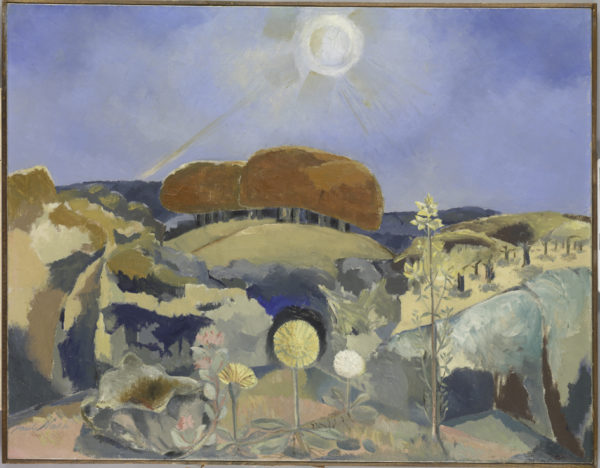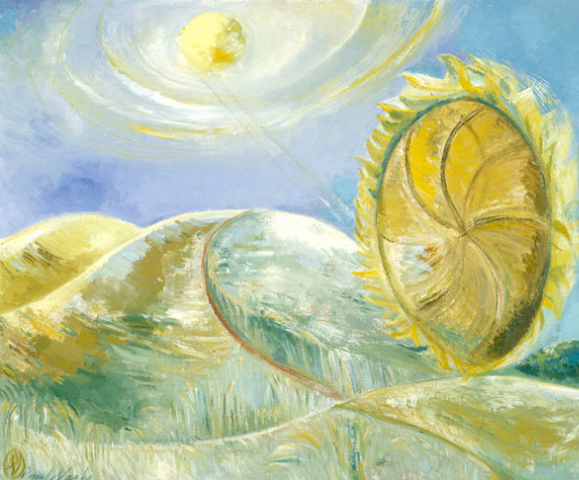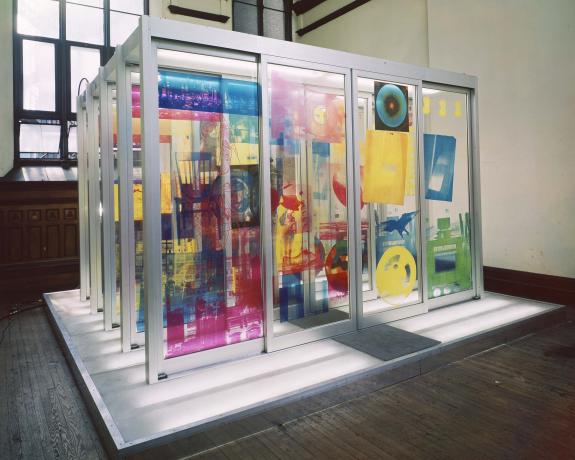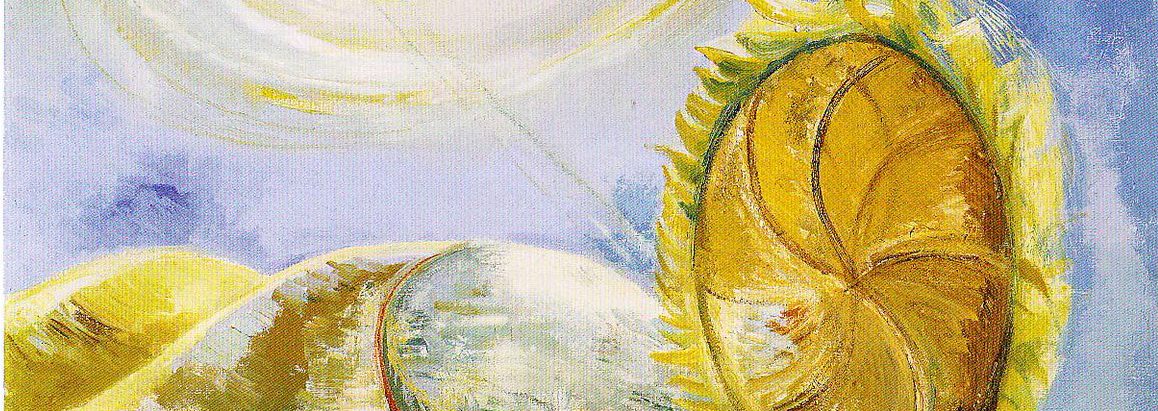Here again – for the summer solstice – are those Wittenham Clumps.

By the early 1940s Nash’s was in declining health. Suffering from chronic asthma – triggered his wife Margaret believed by inhaling gas at Passchendaele in 1917 – he had endured several spells in hospital. He and Margaret, began to make visits to nearby Boars Hill where their friend Hilda Harrison lived in a house that offered him a view of a familiar and beloved sight. He described it as:
Quite lovely country looking over the Bagley Woods towards Wittenham Clumps in the distance and a charming neglected garden very interesting in forms and colours’
These were the Clumps – eight miles away – that had so captivated Nash in his early years before WW1. He began a series of paintings using field glasses to bring the sight closer. The result of this foreshortened perspective can be seen in the paintings. He produced more than a score of paintings and drawings of the sight.
And here the poet measures out the passing of the years by the growth and shadows on a New York street.
A Catalpa Tree On West Twelfth Street
While the sun stops, or
seems to, to define a term
for the indeterminable,
the human aspect, here
in the West Village, spindles
to a mutilated dazzle—
niched shards of solitude
embedded in these brownstone
walkups such that the Hudson
at the foot of Twelfth Street
might be a thing that’s
done with mirrors: definition
by deracination—grunge,
hip-hop, Chinese takeout,
co-ops—while the globe’s
elixir caters, year by year,
to the resurgence of this
climbing tentpole, frilled and stippled
yet again with bloom
to greet the solstice:
What year was it it over-
took the fire escape? The
roof’s its next objective.
Will posterity (if there
is any)pause to regret
such layerings of shade,
their cadenced crests’ trans-
valuation of decay, the dust
and perfume of an all
too terminable process?
– Amy Clampitt

Nash had been reading The Golden Bough by Sir James Frazer and about an ancient custom of rolling fire-wheels downhill in Midsummer to represent the lowering of the sun in the sky. In ‘Solstice of the Sunflower’ the sun has become a sunflower rolling down the Wittenham Clumps – now without their woods – blazing with energy, warmth and light.
In June 1946 and at the urging of his doctor to go down to the sea for a change of air, the Nashes set out for a hotel near Bournemouth. They managed to visit some of his favorite haunts including Swanage and the Dorset coast. He died peacefully in his sleep with an unfinished watercolor that he had been painting on the balcony. Margaret was much comforted by the words of the doctor who said:
Please don’t distress yourself, this is how good men die; and I would say that your husband was a very good man, for he has fallen asleep like a child, and he must have had the heart of a child. – Outline, Memoirs of Paul Nash p.257
A very different representation of the Solstice is this by Robert Rauschenberg in 1968.

Silkscreen ink on motorized Plexiglas doors in metal frame mounted on platform with concealed electric lights and electronic components
The National Museum of Art, Osaka, Japan Engineers: L. J. Robinson, Per Biorn, Tony Tedona, and Ralph Flynn



Daunting, to see catalpas lining a highway, unattended and unsprayed, growing wildly and vigorously without any human help! Try to grow one on purpose, in a “wrong place”, that is, a place not of its choosing, and you may find yourself having to spray annually, and pamper, your catalpa. Clearly, the tree in the poem has chosen its own spot and grows tall and strong, against odds. Either way, I appreciate the admiration of poet for tree. There is one across the street from me (sprayed annually), which comes into splendor each May. The people whose yard it grows in can’t see the blossoms from their house, only the trunk, and I always urge them to come across the street for a viewing, which must be right at dusk. In the fading light, the white catalpa blossoms reflect what little remains and glow as if lit from within. Along with Amy Clampitt, I may mentally mark each year with a neighboring catalpa. The anticipation is part of spring’s ritual. — Elizabeth
What a lovely story. We had a catalpa tree in the backyard on Long Island and I mostly remember the masses of fallen bean pods and not the flowers. You are certainly right about plants and their places. Won’t grow here in spite of all the pampering; will flourish there and take over the neighborhood. After all – a weed is just a well-adapted plant that’s growing where we don’t want it.